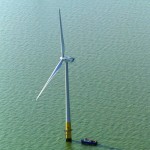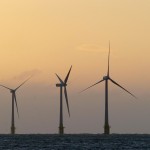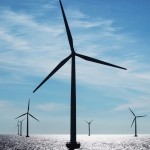 Once upon a time, long ago, some people had a wonderful dream, of a Europe running on green, renewable energy. However, there seemed to be no way of doing this, so they were mostly dismissed as idealists and hippies.
Once upon a time, long ago, some people had a wonderful dream, of a Europe running on green, renewable energy. However, there seemed to be no way of doing this, so they were mostly dismissed as idealists and hippies.
However, many years later in 2011, renewable energy technologies had developed so much and become such a normal part of life that a 100% renewable energy economy was considered an economically and technologically realistic vision for Europe in 2050 and supported by 200 companies.
The vision has now been set out in a declaration drawn up by Greenpeace, the European Renewable Energy Council (EREC) and the European Forum for Renewable Energy Sources (EUFORES). continue reading »
 “EWEA names UK leader in offshore wind”
“EWEA names UK leader in offshore wind”
“Offshore-Windparks wachsen weiter und schneller ins Meer”
“UK wind energy blows away EU rivals”
“European Offshore Wind May Surge 70% in 2011, Trade Group Says”
Those were just some of the headlines on stories published by international media outlets, trade publications and blogs in response to a European Wind Energy Association (EWEA) press release last week announcing another surge in the development of offshore wind power.
And it is understandable there was such interest especially considering the EWEA press release noted that “with 308 new offshore wind turbines installed in 2010 – an increase of 51% in installed wind power capacity on the previous year – offshore wind power experienced a new record growth in Europe.” continue reading »
 Key political decisions and legislation are in the cards for the wind energy industry this year. What exactly is in store and how might it impact the sector?
Key political decisions and legislation are in the cards for the wind energy industry this year. What exactly is in store and how might it impact the sector?
The EU is due to publish its 2050 Roadmap to a Low-carbon Economy, which should show the benefits from a move to 30% greenhouse gas reductions over 1990 levels by 2020. The Roadmap may also outline the path to a 100% renewable energy economy by 2050. This would send an even stronger long-term signal that the EU believes wind power can become a major player in a green economy.
The European Commission should also analyse the National Renewable Energy Action Plans in 2011 and take the necessary action against any Member State which has not put in place the necessary measures to meet its target. continue reading »
 The growing public hunger for more sustainable products took a unique path earlier this week with news that some of world’s leading companies and non-profit organisations are supporting the development of the first global consumer label identifying products made with wind energy.
The growing public hunger for more sustainable products took a unique path earlier this week with news that some of world’s leading companies and non-profit organisations are supporting the development of the first global consumer label identifying products made with wind energy.
In announcing the WindMade initiative, Steve Sawyer, Secretary General of the Global Wind Energy Council (GWEC), said an international survey of more than 25,000 consumers shows 92% of respondents believe renewable energy is a good solution to mitigating climate change, and most of them would prefer products made with wind energy, even at a premium.
“Governments are dragging their feet, but consumers want to see change now,” said Sawyer, who is also the interim CEO of WindMade. “The private sector needs to step up to provide the solutions we need to respond to the global energy and climate crises. With WindMade, we want to facilitate the change that the public demands.” continue reading »
 In a time of great unrest at British universities over tuition increases and programme cutbacks, it’s gratifying to note that at least one respected post-secondary institution is turning to wind power to lessen its carbon footprint.
In a time of great unrest at British universities over tuition increases and programme cutbacks, it’s gratifying to note that at least one respected post-secondary institution is turning to wind power to lessen its carbon footprint.
According to its website, the University of Nottingham has recently unveiled plans for three wind turbines near Clifton Bridge on the River Trent which, if approved, would supply green electricity directly to its University Park campus.
The turbines, which would meet one-third of the electricity needs of the campus, could reduce the university’s carbon emissions by 7,000 tonnes per year, equating to 40% of the reductions target it has set itself by 2015. continue reading »
 Once upon a time, long ago, some people had a wonderful dream, of a Europe running on green, renewable energy. However, there seemed to be no way of doing this, so they were mostly dismissed as idealists and hippies.
Once upon a time, long ago, some people had a wonderful dream, of a Europe running on green, renewable energy. However, there seemed to be no way of doing this, so they were mostly dismissed as idealists and hippies.









